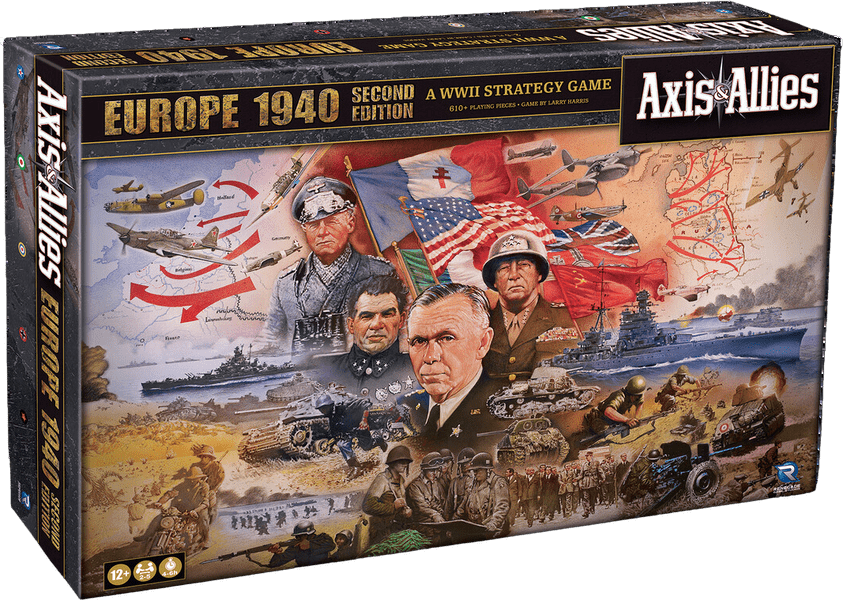Axis & Allies: Europe 1940 (2010) Board Game
Axis & Allies: Europe 1940 is a board game that was released in 2010 by designer Larry Harris, Jr. The game is set during World War II and allows players to take on the roles of different countries involved in the conflict. With a focus on the European theater of the war, players must strategize and make tactical decisions to secure victory.
Game Components of Axis & Allies: Europe 1940
How To Setup Axis & Allies: Europe 1940
Setting up the game involves placing the board, distributing the national storage boxes, and setting up the initial unit deployments for each nation. The board includes all of Africa and South America, with France as its own nation. Players must also place naval and air bases, industrial complexes, and anti-aircraft guns. The game starts with Germany already having invaded Poland and the Low Countries, and France under attack.
Gameplay Mechanics and Game Objective
– Axis powers win by controlling eight Victory Cities, including at least one of their initial capitals (Berlin or Rome).
– Allied powers win by conquering both Berlin and Rome and holding at least one of their original capitals.
Player Experience
Playing Axis & Allies: Europe 1940 is a deeply immersive experience, requiring strategic thinking and planning. The game allows for varied strategies, especially for Germany, which has several viable paths to victory. However, playing as the US requires patience, as they can only enter the war after a few turns. The game also includes a dynamic neutral system, where certain territories can be invaded and turn to either side. This complexity makes the game engaging but also demands a significant time commitment.
Pros
Cons
Personal Thoughts on Axis & Allies: Europe 1940
Axis & Allies: Europe 1940 is perfect for strategy enthusiasts and history buffs who are willing to invest the time and effort into mastering the game. It offers a rich and immersive experience, especially when combined with the Pacific 1940 version for a global game. However, it may not be the best choice for casual gamers or those looking for a quick play session. The game’s complexity and depth make it ideal for dedicated players who enjoy intricate strategies and historical simulations.
We are supported by our audience. When you purchase through links on our site, we may earn an affiliate commission, at no extra cost for you. Learn more.

